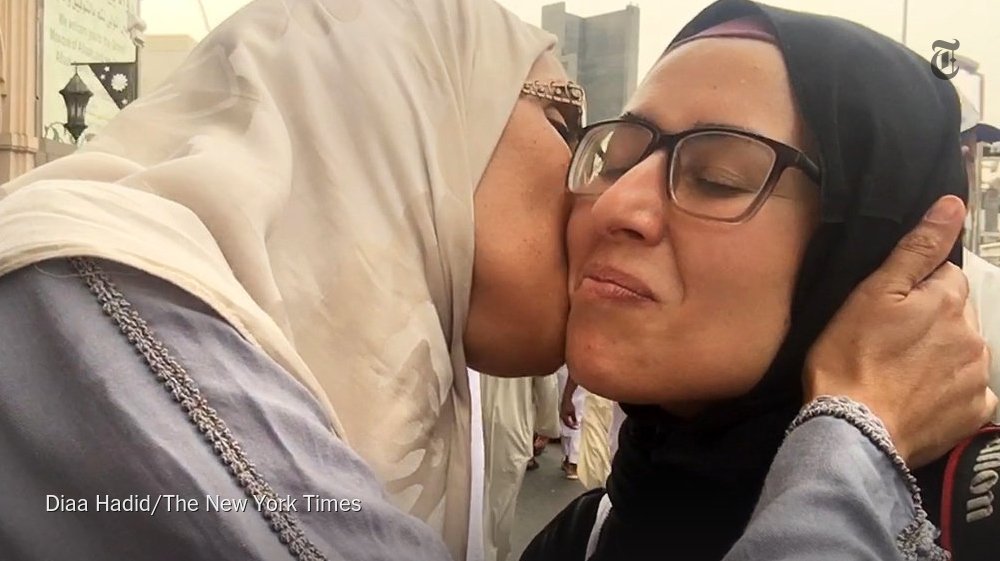Washington- American daily “The New York Times” published on Saturday the second in a series of daily dispatches sent by Diaa Hadid, its correspondent covering this year’s Hajj Pilgrimage in Makkah, Saudi Arabia. Hadid works at the newspaper’s Jerusalem bureau.
Hadid was asked to chronicle her pilgrimage to Makkah during Hajj.
When talking about her life, Hadid says that she grew up in a observant Egyptian-Lebanese Muslim family in Canberra, Australia, and at the age of 15 started wearing the hijab. She prayed regularly, memorized the Quran and sought to study Shariah, Islamic law.
She explained that her faith began to shatter in college. At 20 years-old she took off her Hijab (head scarf), feeling that she could no longer visibly represent a religion that did not allow women to preach before men, lead them in prayer or serve as witnesses in some judicial matters.
However, at 38, Hadid admits to having a “tangled relationship with Islam.”
“It is the bedrock of my values. It informs how I smile at strangers, give to charity and try to be patient with dentists and landlords. But I date, I own a (modest) bikini, and while I still fast during the holy month of Ramadan, I do not exactly adhere to Islam’s other prescriptions,” said Hadid.
Still, she had always dreamed of doing the hajj. Her oldest sister, Marwa, a farmer in rural New South Wales, and her planned to take a year off and walk to the Kaaba, as the great Sufi woman Rabia al-Adawiya did in the eighth century, from Basra, Iraq. It was one of those bucket-list items that got kicked back as life happened.
Years came and went, and at the start of 2016 Hadid, at the daily’s Jerusalem bureau spoke again of her dream. The team suggested she applies for a journalist visa to cover the hajj. She then posed for a fresh passport photo wearing a black head scarf.
“Are you a Muslim, sister?” the man at the Saudi Embassy in Jordan asked, looking suspiciously at the photo.
“Yes, sir,” Hadid said, pointing to my rather poetic name, Diaa el-Radwa, the Light of Radwa.
Radwa is a mountain in Medina, the second-holiest city in Islam. The man stamped her passport with the visa.
In the weeks since, she had sometimes found herself crying as she realized she would soon lay her eyes on the Kaaba, which is empty — a reminder that the heart of Islam is the worship of a singular, inimitable God.
She also dreaded the crowds, the heat and the logistics, and especially the minder whom the Saudi Ministry of Information assigns to follow journalists everywhere.
Taking her mother’s advice who had undertaken the pilgrimage several times- and said nothing worked better than socks and Crocs — easy to slip on and off- she got Crocs.
She also took her sister Arwa’s advice of wearing a long robe with a zipper, instead of buttons, so nobody can rip it open. Per my mother’s instruction, I tailored it to sit above my ankles, so I won’t trip.
“I cannot begin to describe the crowds,” Hadid’s brother wrote on the family WhatsApp forum. “You will often be stuck in human traffic moving only by the will of people around you, almost like a wave carrying you.”
And then, Arwa, who made the journey in 2004 told Hadid of “The spiritual feeling overtakes” all earthly issues, “she wrote on WhatsApp: “It takes over all of that. It’s beautiful and unforgettable.”
